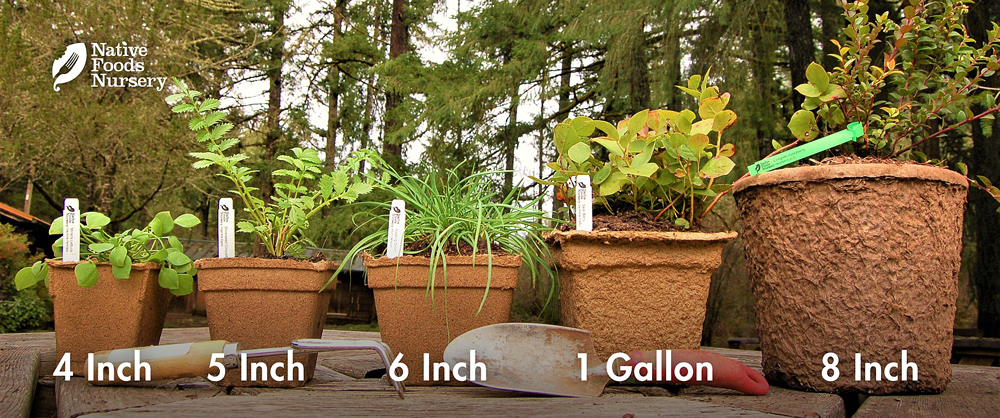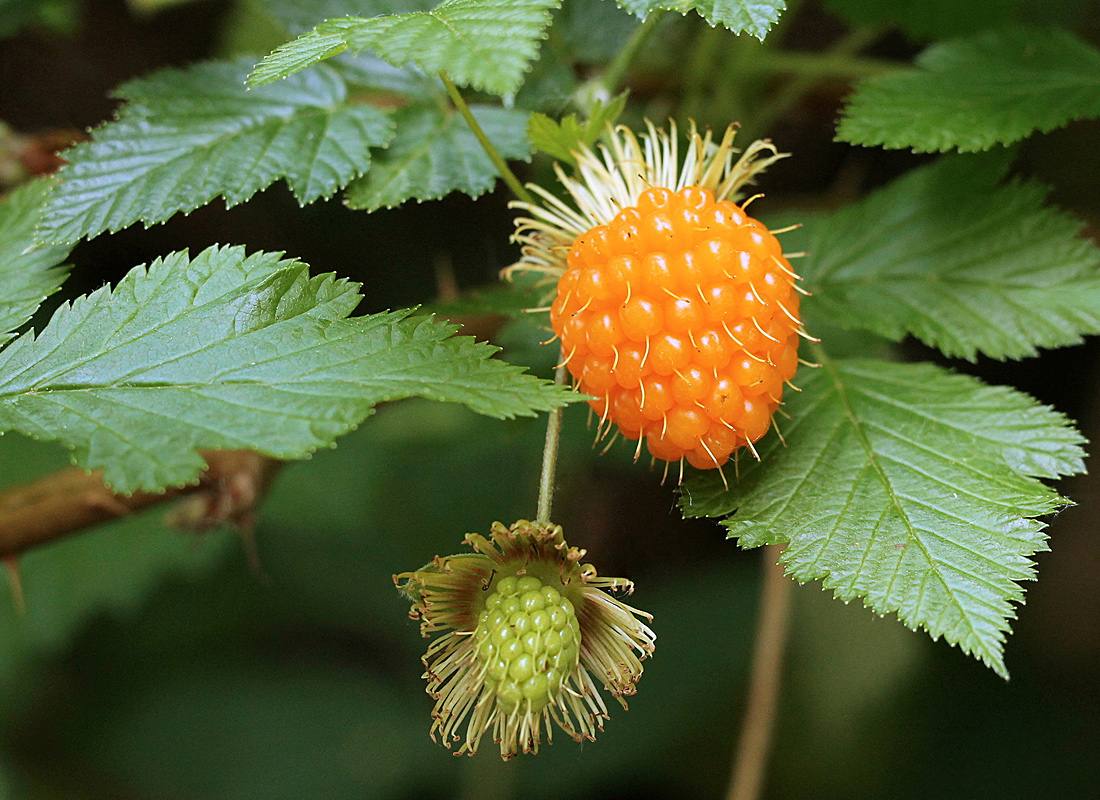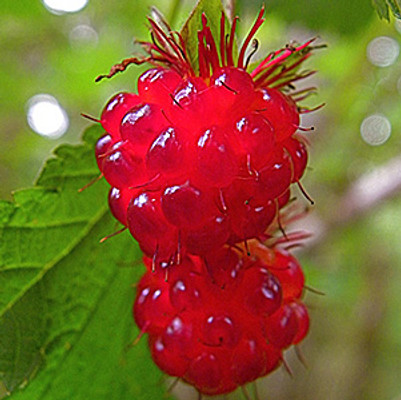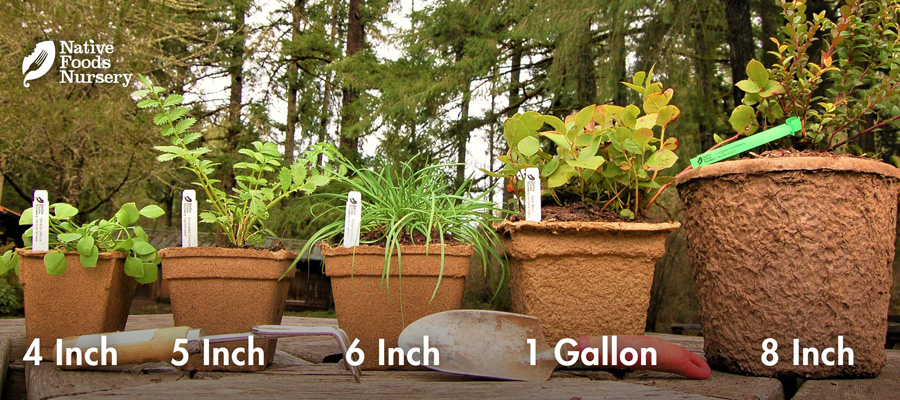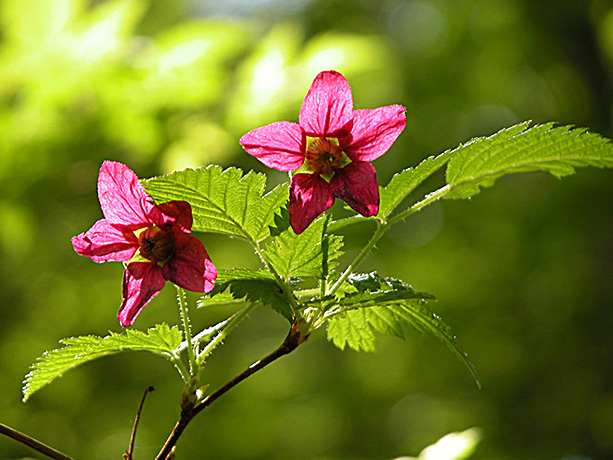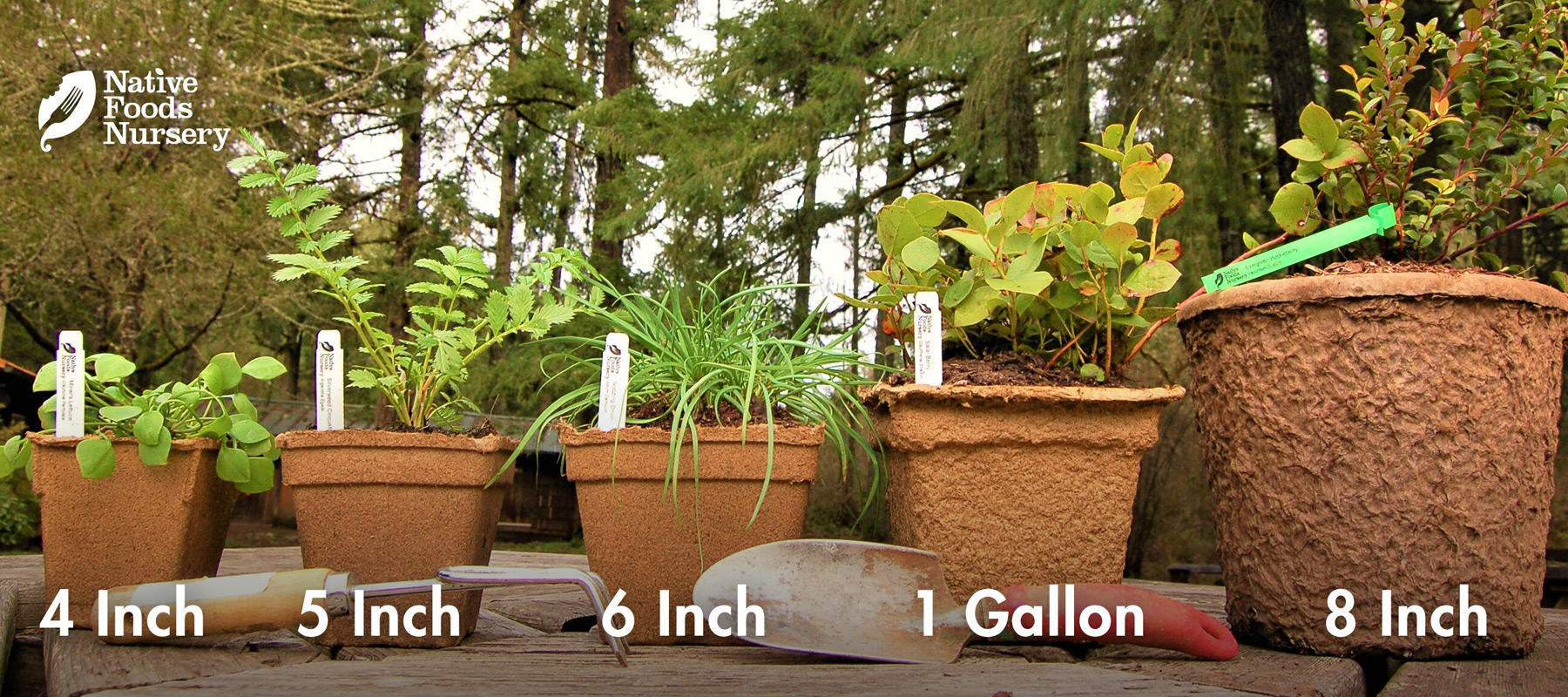Salmonberry is another Northwest favorite native food. This delicious pink-orange-red berry with beautiful pink blossoms is found growing along streambanks or wet spots throughout the West.
Edible Uses
Salmonberry is a deciduous bramble native to the Pacific Northwest. Salmonberry is likely to be the first berry you taste out of your garden every year. While salmonberry is not as robust in flavor as it cousins blackberry and raspberry, it has a subtler taste that some prefer and is early ripening fills in important niche when few other berries are ready to eat. The berries are good raw and can be frozen or made into preserves and compotes. Because of their high water content the berries do not dry well. Salmonberries are known to be an excellent source of vitamins C and K, and manganese.
Ornamental Qualities
Salmonberry is widely grown just for its incredible flowers. Beginning in early spring and continuing into May, the Salmonberry produces copious quantities of lush, dark pink flowers. If you like to attract hummingbirds to your yard, Salmonberry flowers will keep them coming back every year. The large berries have an ornamental quality all their own, ranging in color from orange/gold to salmon pink to neon red to purple/black. The raspberry like canes have a reddish-brown bark and tiny spikes proliferating along the cane.
Environment and Culture
Salmonberry thrives in moister environments, on streambanks, seasonally flooded meadows and forest edges. Consider Salmonberry for areas that have plenty of moisture throughout the season. They will grow well as an understory plant beneath open canopy trees like the Oregon White Oak but they cannot handle dense shade. Salmonberry is often found growing with other native edibles like Elderberry, Fiddlehead Fern, and Evergreen Huckleberry. On the PNW coast they sometimes grow in large thickets under Red Alder.
Northwest Native American tribes today still value this special plant as food, medicine, and family. Despite great cultural losses, they continue to work towards stewarding and restoring wild populations, both strengthening the integrity of the ecology and sustaining their cultural heritage and wisdom. These strong and recovering peoples and plants deserve our respect, gratitude, and reparations. (Learn more & how to help on our Charitable Giving page.)
Harvest, Care, and Preparation
Harvest the berries as they ripen through the summer. Pick the young, tender shoots in early spring, peel and steam them or add to soups like a vegetable.
Keep Salmonberry plants in wet locations or provide lots of summer water to get big harvests of berries throughout the summer and early fall. Salmonberries can be used anyway you would a raspberry except for drying. Put them in pies, jams, compotes and drinks to capture the true flavor of the Pacific Northwest.
Native Range: CA, OR, WA, ID, BC, AK
USDA zones: 4-9
Ease of Care: Easy
Deer Resistance: High
Light Requirements: Full Sun to Partial Shade
Soil Type: Any
Water Requirements: Moist-Wet
Pollination: Self Fertile
Bearing Age: 2-3 years from planting.
Size at Maturity: Up to 6 Feet
Bloom Time: March-May
Harvest Time: May-August
Pot Sizing Guide
